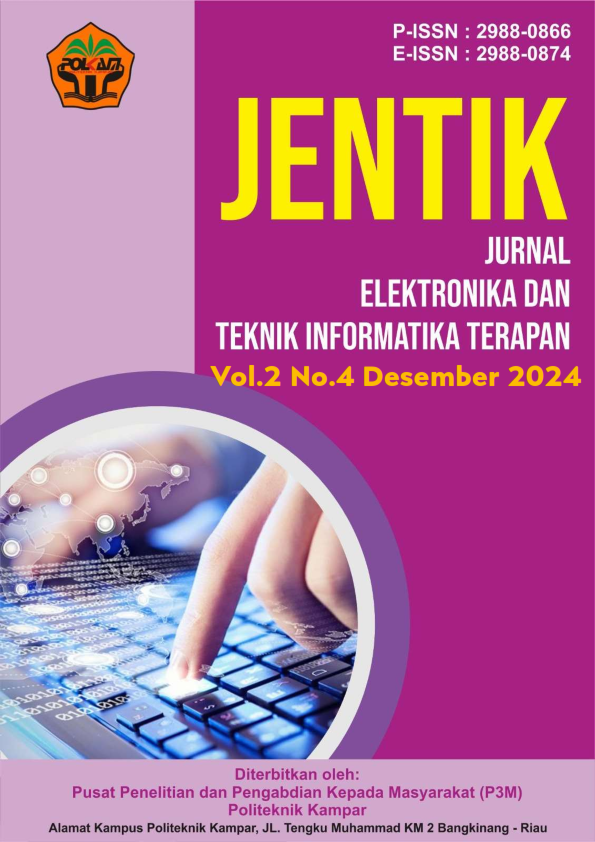Analisis Sudut Pandang dalam Kepuasan Gen Z dalam Menggunakan QRIS
DOI:
https://doi.org/10.59061/jentik.v2i4.855Keywords:
payment methods, QRIS, gen Z, user benefits, financial technologyAbstract
in the modern era as it is in this day and age where technology has begun to advance, this is characterised by several methods for payment, at this time there are many people who use QRIS as a payment method compared to physical money, with this method I want to find out how people use the QRIS method well, With the increasing use of financial technology among the younger generation, understanding the factors that affect user satisfaction becomes very important. The method used in this research is a survey involving generation Z respondents in various cities in Indonesia. In addition, the understanding of QRIS also plays an important role in increasing the interest of users of this payment method. Respondents who have a better knowledge of how QRIS works and the benefits tend to be more open to using it as a payment alternative. Therefore, education and clear information delivery about QRIS can increase their knowledge. The ease of using QRIS is also proven to positively affect user interest. The perception that QRIS is easy to use makes the younger generation feel more comfortable and tends to utilise it in daily transactions. In the context of the ever-growing digital era, it is very important to understand the factors that affect interest in new payment technologies such as QRIS. Data collection was carried out through interviews designed to explore the level of satisfaction, ease of use, security, and respondents' preferences towards the use of QRIS. Research results show that although QRIS is well received by generation Z, the factors of convenience, transaction speed, and security when transacting are the main aspects that affect their satisfaction level. The results of this research are expected to provide useful insights for financial technology companies, banks and governments to expand the implementation of QRIS in Indonesia. By utilising social media platforms for education and increasing understanding, as well as ensuring the convenience of QRIS users, this can accelerate the implementation of more efficient and modern payment technology among generation Z, which in turn supports economic growth.
References
Butarbutar, N., Grace, E., Putra, L. A., Loist, C., & Sudirman, A. (2022). Behavioral Intention Constituent Analysis of QRIS Digital Payment Tools in MSMEs in Pematangsiantar City. Ideas: Jurnal Pendidikan, Sosial, Dan Budaya, 8(4), 1537. https://doi.org/10.32884/ideas.v8i4.1023
Firmansyah, F., & Saputra, A. C. (2021). Effect Of The Implementation Of Queue System On Customer Satisfaction. Bongaya Journal for Research in Management (BJRM), 4(1), 1–7. https://doi.org/10.37888/bjrm.v4i1.245
Kurniawati, E. T., Zuhroh, I., Malik, N., & Malang, U. M. (n.d.). Literasi dan Edukasi Pembayaran Non Tunai Melalui Aplikasi QR Code Indonesian Standard (QRIS) Pada Kelompok Milenial. http://ejournal.umm.ac.id/index.php/skie
Permatasari, R., Amboro, F. Y. P., & Nurlaily, N. (2022). Efektivitas Penerapan Transaksi QRIS Era Covid-19 di Pasar Tradisional Kota Batam Menurut Perspektif Hukum Progresif. AL-MANHAJ: Jurnal Hukum Dan Pranata Sosial Islam, 4(2), 265–278. https://doi.org/10.37680/almanhaj.v4i2.1780
Ramadhani, A. N., Fasa, M. I., & Suharto, S. (2022). Analisis Metode Pembayaran Dalam Meningkatkan Minat Beli Konsumen Pada E-Commerce: Tinjauan Perspektif Ekonomi Islam. Jurnal Bina Bangsa Ekonomika, 15(1), 111–119. https://doi.org/10.46306/jbbe.v15i1.127
Sani, A. (2018). Penerapan Metode K-Means Clustering Pada Perusahaan. Jurnal Ilmiah Teknologi Informasi, May, 1–7. https://www.researchgate.net/publication/326849650_PENERAPAN_METODE_K-MEANS_CLUSTERING_PADA_PERUSAHAAN
Sani, A., & Wiliani, N. (2019). Faktor Kesiapan Dan Adopsi Teknologi Informasi Dalam Konteks Teknologi Serta Lingkungan Pada Umkm Di Jakarta. JITK (Jurnal Ilmu Pengetahuan Dan Teknologi Komputer), 5(1), 49–56. https://doi.org/10.33480/jitk.v5i1.616
Sani, A., Wiliani, N., Budiyantara, A., & Nawaningtyas, N. (2020). Pengembangan Model Adopsi Teknologi Informasi Terhadap Model Penerimaan Teknologi Diantara Umkm. JITK (Jurnal Ilmu Pengetahuan Dan Teknologi Komputer), 5(2), 151–158. https://doi.org/10.33480/jitk.v5i2.1055
Downloads
Published
How to Cite
Issue
Section
License
Copyright (c) 2024 Jurnal Elektronika dan Teknik Informatika Terapan ( JENTIK )

This work is licensed under a Creative Commons Attribution-NonCommercial-ShareAlike 4.0 International License.








